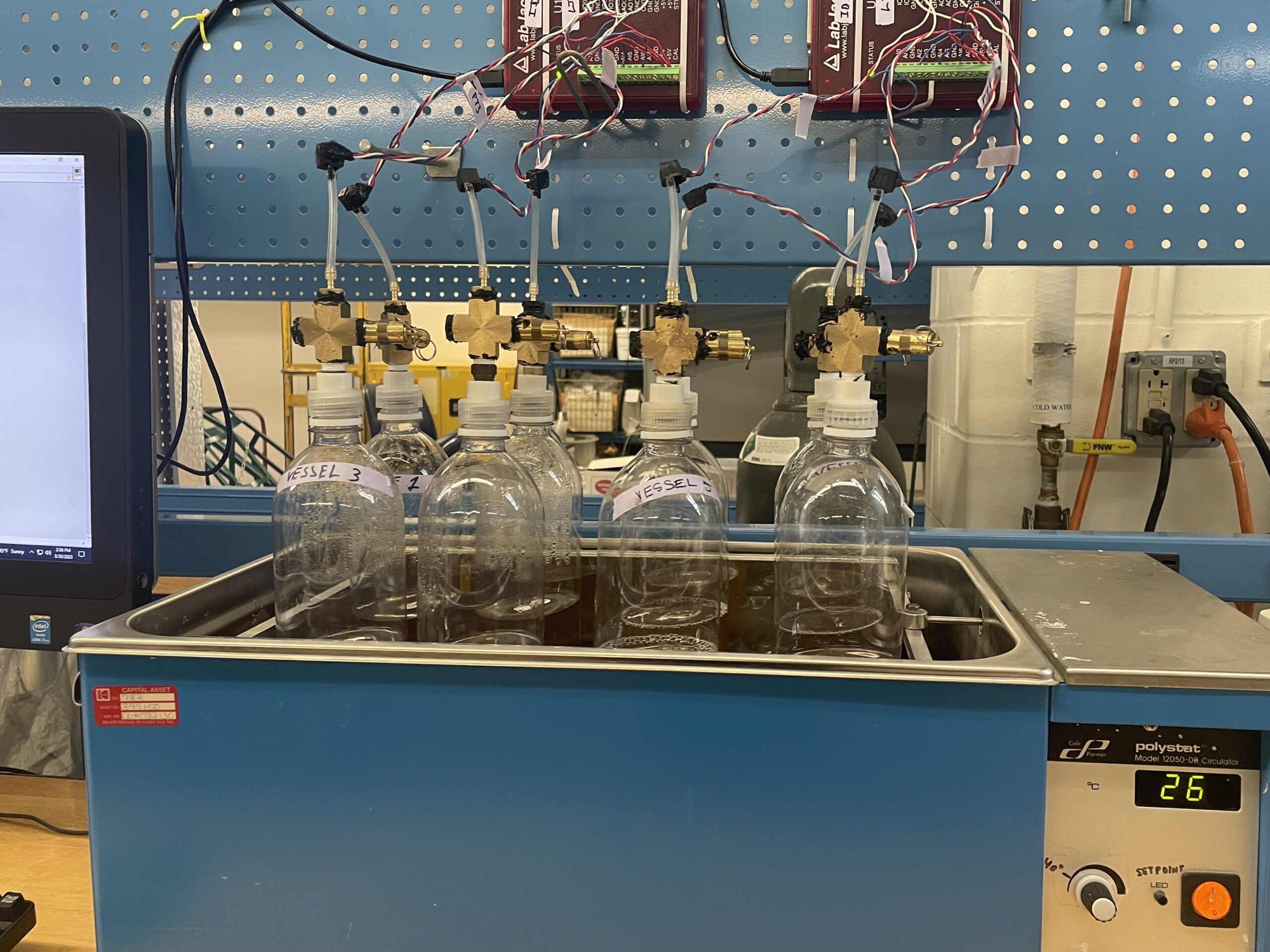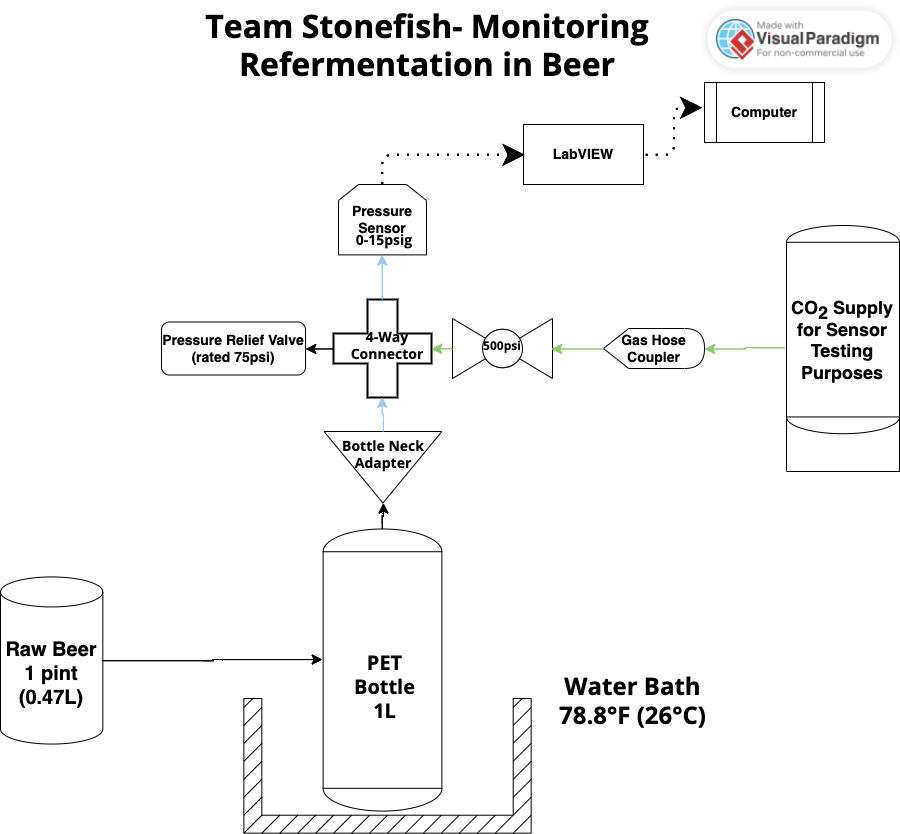
Team Stonefish
- Madeline Smith
- Ben Kelley
- Avery Young
- Kimberly Clem
Mentors
Wayne Griffin, Doug Kelley
Abstract
Team Stonefish researched novel treatments for inhibiting post-canning refermentation in sweetened beer, which can cause profit loss and recalls. A testing apparatus was built to monitor the pressure of several trials of sweetened beer dosed with chemical additives over the course of a week. Citral and phosphoric acid in combination were determined to have a positive inhibitory effect on refermentation.

Methods
To test different treatments, 16 oz of sample beer was placed in a vessel and dosed with the sugar, treatment, and additional yeast. The vessel was then attached to the build and placed in a warm water bath where the LabVIEW program recorded its internal pressure every 5 minutes over one week. Initial and final specific gravity and pH were taken as well to understand composition changes within the beer.
1L PET bottles were chosen as the vessel to house the beer, since they could handle high pressures, were clear enough to observe the liquid, and were adaptive enough for implementation into the brass build assembly.
The brass build assembly consisted of a 4 way connector with a 0-15 psig pressure sensor, a 75 psi pressure relief valve, gas hose coupler, and bottle neck adapter attached.

Results
Among all selected treatments (pH reducers citric and phosphoric acid, citral, thyme essential oil, and potassium sorbate), thyme essential oil and pH reduction (particularly citric acid) do not effectively inhibit refermentation. Potassium sorbate had reproducibility issues. While citral was partially effective alone, citral was suspected to have synergistic effects in lower pH environments1. A DOE was performed with citral and pH level (3.0 and 3.5 pH, obtained using phosphoric acid). This combination yielded successful trials.
Results were assessed visually and mathematically in terms of pressure increase, moles of CO2 produced (reaction yield), specific gravity, and pH. Because the sample beer was already carbonated, an initial off-gassing effect was observed when the beer was placed in the warm water bath:
The secondary rise after the initial spike due to off gassing can only be explained by fermentation of the added sugars.
The graph above shows an example of citral in combination with a reduced pH environment successfully inhibiting refermentation.
Taste Testing
Trials that did not exhibit refermentation were saved and stored in sealed containers to determine how the chemical treatments affected the flavor of the product. Once trials were concluded, all successful samples were tasted, by volunteer students and faculty at a BBQ hosted by Team Stonefish. Additionally, three non-fermentable sweeteners, Stevia, Sucralose, and Erythritol were also added to sample beer to be taste tested and explored as alternatives to Lactose, the current non-fermentable sugar used by our sponsor, Stoneyard Brewing Company. Participants tried individual samples and completed a google form containing sliding scales for taste (personal enjoyment), aroma, acidity, bitterness, sweetness, mouthfeel, and aftertaste.
T-tests were performed on the samples with sample means for “taste” closest to the control sample mean. From this analysis, it was determined if there was a statistically significant difference between the control mean and the sample mean.

Conclusions and Future Work
While citral was successful in inhibiting refermentation, it had a significant impact on the desirability of the product and was very unpopular during qualitative testing. It is suspected that effective use values for citral in combination with reduced pH can be decreased, and future work should focus on determining minimum effective values and associated qualitative testing.
Acknowledgments
Team Stonefish would like to thank our sponsor Jeffery Osborne from Stoneyard Brewing Company for his support. We would also like to thank our advisor Wayne Griffin, Professor Doug Kelley, Professor Melodie Lawton, Professor Mark Juba, Clair Cunningham, Mason Garlatti, and our TA Faraan Hamad for their invaluable advice throughout the project. Thank you also to Jeff Lefler for machining our bottle neck adapter.
References
1.Tabanelli, G. (2019) Physiological response of Saccharomyces cerevisiae to citral combined with thermal treatment. Food Science and Technology, 101, 827-834
